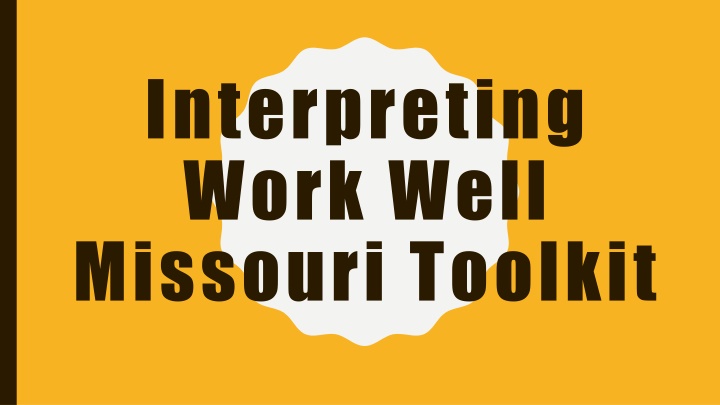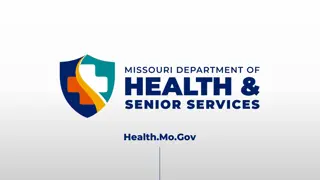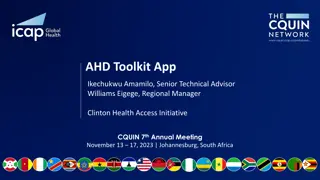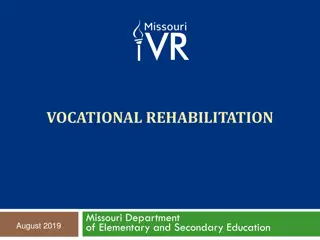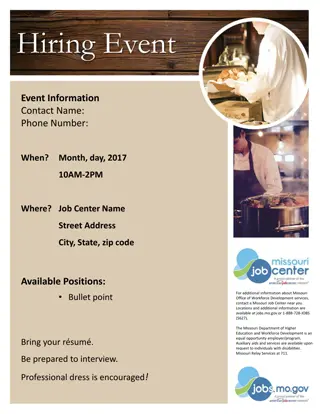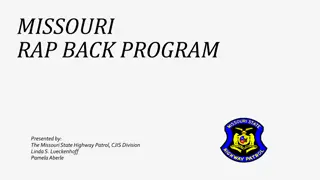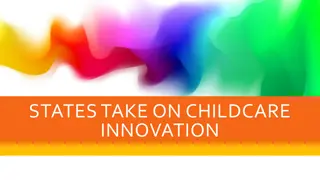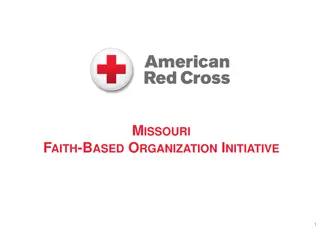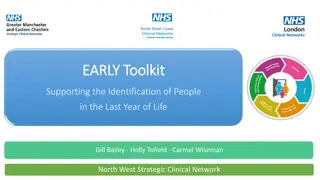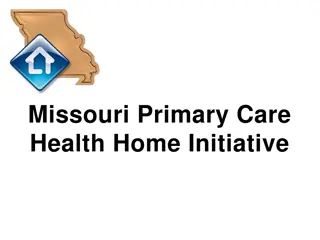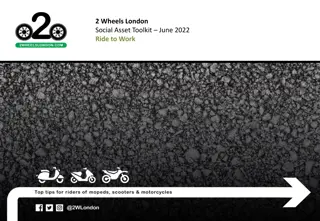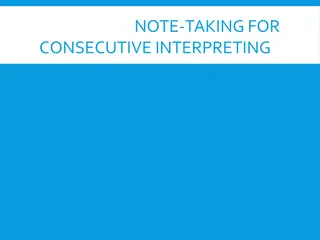Interpreting Work Well Missouri Toolkit
The Interpreting Work Well Missouri Toolkit focuses on the benefits for both employers and employees in promoting workplace wellness. It covers the purpose of decreasing health costs, boosting productivity, improving morale, reducing absenteeism, and more. The toolkit emphasizes the importance of commitment, setting up a wellness committee, and appointing a wellness champion to engage employees in wellness programs. Assessing worksite strengths and weaknesses and understanding employee habits through data analysis are key aspects of the toolkit.
Download Presentation

Please find below an Image/Link to download the presentation.
The content on the website is provided AS IS for your information and personal use only. It may not be sold, licensed, or shared on other websites without obtaining consent from the author.If you encounter any issues during the download, it is possible that the publisher has removed the file from their server.
You are allowed to download the files provided on this website for personal or commercial use, subject to the condition that they are used lawfully. All files are the property of their respective owners.
The content on the website is provided AS IS for your information and personal use only. It may not be sold, licensed, or shared on other websites without obtaining consent from the author.
E N D
Presentation Transcript
Interpreting Work Well Missouri Toolkit
STEP 1 Purpose = Benefits Employer Decrease health cost Increase productivity Create better morale Reduces absenteeism Decrease turnover Employee Decrease probability of illness Decrease stress levels Decrease weight Increase energy Help manage and control chronic illness ROI- (Return On Investment) $1.00 =$3.00 the more you invest the more you get out of your investment
STEP 1 continued Purpose http://health.mo.gov/data/brfss/index.ph Many of the risk factors for chronic diseases are both preventable and modifiable
STEP 2 Getting started SUCCESS EQUALS COMMITMENT After management approval select: Wellness Committee o Broad representation of employees Wellness Committee Responsibilities o Assessing o Promoting o Planning o Recruiting of wellness champion o Conducting evaluations
STEP 2 Getting started WELLNESS CHAMPION FUNCTION Promote wellness policies Encourage current/new employees to participant in the wellness program Responsible for posting flyers, staff meeting announcements, education posters Stay current with wellness calendar and activities Wellness Champion-An employee who has the desire to support healthy lifestyle policies in the work place and help others achieve their health and wellness goals. Wellness committee to designate
STEP 2 Getting started
STEP 3 Assessing Identify worksite strengths and weakness Create a baseline Show resources and areas Gauge employee interest Measure for evaluation
STEP 3 Assessing How to understand the results from a employee habit interest? Use Missouri data As a benchmark for comparing key health indicators of employees. health.mo.gov/data/brfss/index.php Sample surveys prevent.org/downloadStart.aspx?id=18 ihealthtools.org/work/documents/eis_printversion.pdf
STEP 3 Assessing Health Risk Assessment Health Risk Assessments (HRA) are an outcome evaluation measure of overall employee health and risk status. HRAs calculate the probability that a person with certain risk factors will acquire various chronic diseases or suffer premature death. HRA Self reported lifestyle information o Weight/height o Cholesterol o Blood pressure o Glucose o Tobacco use o Over all health My Life Check a assessment tool that individuals can use to track their heart health information. www.heart.org/HEARTORG/Conditions/My-Life-Check---Lifes-Simple-7_UCM _ 471453_ Article.jsp#.Vwa_uXqQl1c
STEP 4 Planning Factors to consider when developing wellness plan o Importance o Cost o Time o Commitment o Reach Be Realistic and start small Narrow the focus by using the CDC Worksite Health Score Card. The score card will help you to prioritize.
STEP 4 Planning Recommendation table
STEP 4 Planning Targeting individual changes takes many resources and only affects one person Policy and environmental changes that target communities and organizations have a much greater potential influence.
STEP 4 Planning Action Plan o Goals/objectives o SMART o Specific - Measurable Achievable Realistic Time-phased o Specific recommendations on chosen interventions o Staff, resources and materials o Time frame o Evaluation Once a plan is agreed upon using evidence based intervention can help worksites reach their goals. Always look for websites that have the ending domain .edu, .gov, and .org www.cdc.gov. http://www.heart.org. https://extention.missouri.edu.
STEP 4 Planning The action plan can be shared with management to gain buy-in for interventions.
STEP 4 Planning Policy changes Formal written statements to create and environment the promotes; o Healthy habits o Behavioral incentives o Access to resources Legal considerations Workplace wellness programs must be voluntary, non-discriminatory, reasonably likely to promote health or prevent disease and protect the confidential health information of their employees. Have your attorney review any new policies and programs you are considering implementing. More info: U.S. Equal Employment Opportunity Commission and U.S. Department of Health & Human Service
STEP 4 Planning Employees readiness to change; o Pre- contemplation-not thinking about changing o Contemplation- starting to think about changing o Preparation- have tried change o Action- taking real steps to change o Maintenance continue long change
STEP 5 Implementing Communication is key Company newsletter or on the website. Spread the word about the initiative through wellness champions. Company-wide email or other electronic sources. Staff meetings. Promote monthly topics and screenings. Provide educational/awareness training using local speakers or providers. Posters in the hallways or common areas. Events or health fair.
STEP 5 Implementing Creating interest and motivation There are many key factors that influence people s health behaviors. o Time o Access o Knowledge and awareness o Cost o Key time period o Goal setting o Buddy system/teams o Campaigns
STEP 5 Implementing Motivation~ incentive items attached to small successes Achievement awards Public recognition Food Entertainment Merchandise Monetary rewards or rebates Time off
STEP 5 Implementing When Implementing: DON T Be pushed into a fast startup Fail to act on employee needs and interests Overuse incentives Just focus on the high-risk group Forget the fun factor
STEP 6 Evaluating How do you know if what you did improved the environment and the bottom line? Attendance Sick leave usage Employee turnover Morale Productivity Health attitudes
STEP 6 Evaluating
Common Challenges Budget Time and resources Lack of participant engagement I didn t know
Best Practice For Success Provide health education Link to services Create a supportive environment Integrate health into culture Conduct screening and referral for follow up
